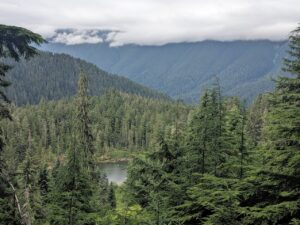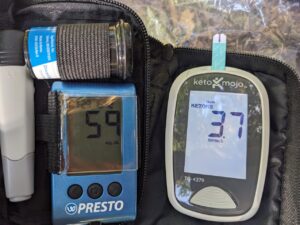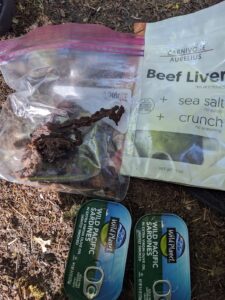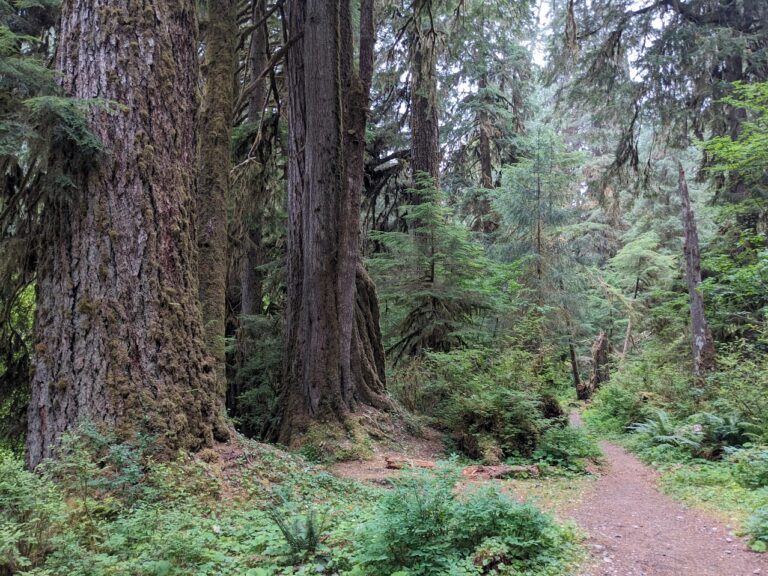Insights from the Trail – Part 1
There is much to learn from challenging oneself with difficult physical endeavors. I recently embarked on a 3-day backpacking trip in the Olympic National Park and had some valuable (to me, at least) insights from the experience.
The Adventure
After driving to the complete opposite side of the Olympic Peninsula, I set off on the trail with a 35-lb pack along with 2 friends. We hiked ~10.5 miles to our base camp where we stayed for 2 nights, with day 2 consisting of a ~13-mile excursion up the mountainous terrain.
The hike courses through the lush Hoh rainforest with old-growth trees draped in moss, following the course of the Hoh River that originates from glacier melt from Mount Olympus at the center of the Olympic National Park.

A Look Inside My Head
Hiking/backpacking long distances can feel very isolating at times, even with hiking partners. Even though our days of hiking started with conversation, it didn’t take long for silence to set in amongst the group, as our attention (mine, at least) turned to the physical challenges – labored breathing, tired muscles, sore feet, etc. That gives you a lot of time to reflect on anything and everything in your head. Here are some of those things that coursed through my head on the trail:
- Pay attention to your footsteps, but also keep your eyes on the distance.
Even with the most stable ankles, the trail through the rainforest is hazardous with rocks, roots, and uneven ground. Careful foot placement is of paramount importance, but it’s critical also to pay attention to what’s around you in the wilderness – to appreciate the beauty of the surroundings.
Here, we had a close encounter with a black bear that I spotted in a tree ahead of us on the trail. It appeared to be a juvenile bear, based on its size. We ensured that there were no other bears in sight and made our presence known with firm voices. It clearly spotted us and casually sauntered up the hill, where we spotted it a couple more times as we worked our way up the switchbacks.
- Fat is fuel
On a previous backpacking trip,  I described the surprising absence of hunger on the trail, despite days of grueling physical activity. I recognized that sensation as being in ketosis, but couldn’t confirm it at the time. This time, I brought my ketone meter and glucose meter with me to better understand what was happening with my metabolism.
I described the surprising absence of hunger on the trail, despite days of grueling physical activity. I recognized that sensation as being in ketosis, but couldn’t confirm it at the time. This time, I brought my ketone meter and glucose meter with me to better understand what was happening with my metabolism.
Day 1: I started with a ketone level of 0.5 mmol/L (note: 0.5 is the low end of what’s considered nutritional ketosis) and increased significantly to 1.9 upon reaching camp.
Day 2: Grueling day up the mountain sent my ketones to 3.7.

Again, I had no hunger whatsoever during the 3 days of hiking. Still, I ate, focused on high protein intake to avoid muscle breakdown. I also helped my hiking partner finish off a couple of his freeze-dried meals containing carbs such as rice, potatoes, etc.
The important takeaway for me was the confirmation that I was solidly in ketosis, which explains the lack of appetite. Backpackers, hikers, etc. are often confused at the decrease in appetite in the setting of grueling physical activity. They are generally more concerned initially about whether they are able to carry enough food to sustain themselves. However, when our bodies are relatively “deprived” of carbohydrates and we have burned off our glycogen stores, the conversion to fat metabolism leads to ketone formation. Ketones provide an alternative energy source to glucose and thereby provide a near limitless supply of fuel to the body compared to the small stores of glucose.
[To be continued]





